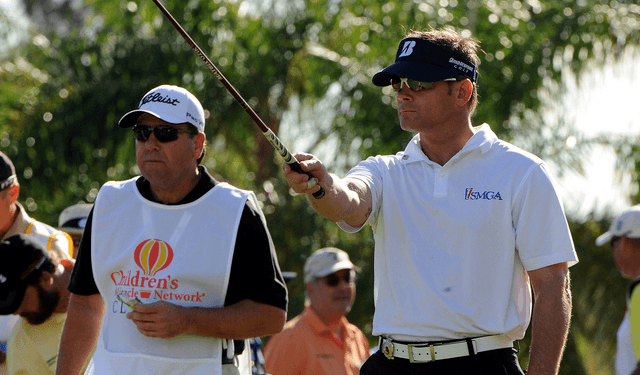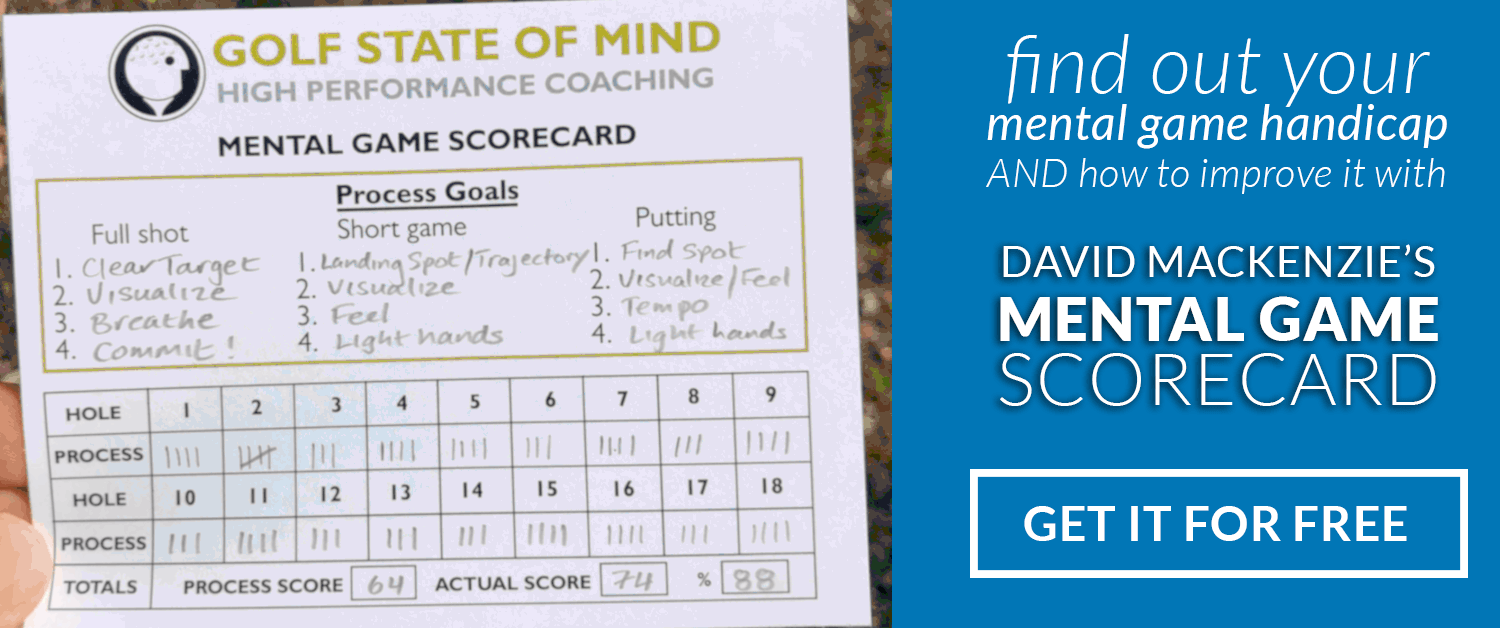
Why Is A Pre-shot Routine So Important?
The pre shot routine for golf is arguably as important as the swing itself. Where you put your focus before and during a shot will have a huge impact on your swing or stroke and the end result.
If you don’t have a plan and clear mind, you won’t be able to access your best skills during your swing.
The Pre Shot Routine For Golf: The make or break time for a golf shot
Over the years I’ve worked with hundreds, if not thousands, of students and I’ve heard pretty much everything that a golfer can think about during the moments before a shot. I’ve also learned how those different thoughts affect how well the shot is played.
What you think about before a shot directly affects your swing
To strike the ball well to your intended target requires the golf swing to be fluid and tension free. However, without a proper pre shot routine for golf, you won’t be able to eliminate conscious thought over the ball, so that fluidity and synchronicity needed is hard to achieve.
Players will ask me why they can’t swing on the course as well as they do on the driving range, and this is one of the reasons. On the range, they swing without thinking. They get into a rhythm. On the course, with the addition of pressure, consequences, playing in front of others etc. there’s interference from doubt, over-thinking and “what ifs”.
If you’re going to be more consistent, you have to change this pattern and find something to focus on that is going to hold your attention and deepen your connection with the shot.
The 2 phases of the pre shot routine for golf
Thinking phase
When a player arrives at their ball, the “thinking” or “conscious” phase begins. This is where you decide on the best target and type of shot considering the situation (lie, wind, risk/reward, good/bad miss etc). By the end of this phase, the player should have a very clear intention for the shot i.e. distance, club, shot shape and trajectory. The best question to ask is “What does a good shot look like here?”Once you’ve done this, no more thinking is required apart from getting set up correctly.
Clear your mind and stop thinking (entering the “Engagement phase”)
When you start your walk into the ball, you enter the second phase of the pre shot routine, which is the “subconscious” or “Engagement” phase. Since the optimal target and shot type has already been determined, no further “thinking” about it needs to be done. The activity in your brain moves from the left (logical/analytical) side, ,to the right (artistic/creative) side. The rest of the shot routine is done, without thinking. It’s time to trust yourself and engage your athletic mind.
Determining what you need to focus on to keep your “athletic mind” engaged is something you can work out during your mental practice for golf, but it will most likely be the mental image or the feel of the shot. Some players like breathing or counting or a swing thought. It’s important to realize that there’s no “right” thing to focus on during the engagement phase, it’s important to practice your pre shot routine for golf and determine what works best for you.
Creating the image or holding on to the feeling of the shot (from your rehearsal swings) will instruct your “subconscious” mind on how to move your body during the shot. Some elite players say they can still see the image of the shot in their mind’s eye even while they are looking down at the ball. They’re certainly not thinking about where the hazards are or giving themselves technical instruction on how to play the shot.
A better way to measure your success
During your next round, keep a record of how many shots that you successfully went through your pre shot routine for golf. Measure your success by how well you were able to focus on these steps, instead of where the ball went. Try to make your mind as quiet as possible in the trust phase and focus only on the intention for the shot. This is a far better goal to have than shooting a good score. This keeps you focused on what you can control and steers you away from the anxiety of speculating about your score (which you can’t fully control). To download your template to measure your rounds in this way, please download your mental game scorecard below.
Photo courtesy of US Army


